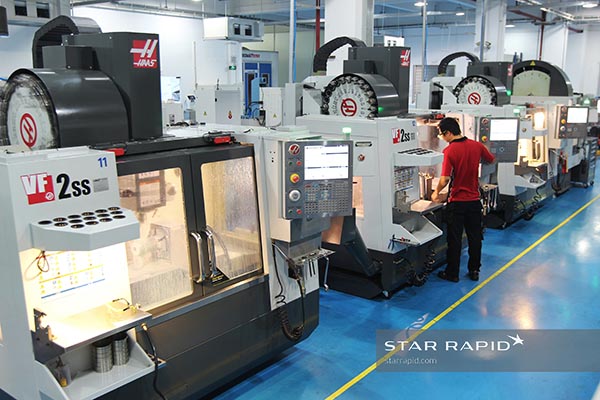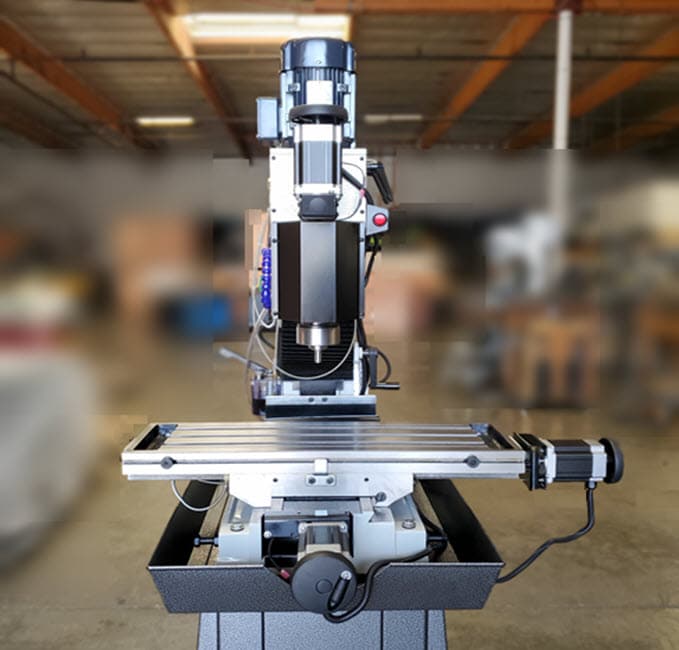Table of Contents
CNC mills are an essential tool in the manufacturing industry, used to create complex shapes and designs with precision and accuracy. With the increasing demand for precision and efficiency, the use of CNC mills has become more prevalent.
One of the components of a CNC mill that often causes confusion is the end bit. Many people wonder if end bits are used for poking or drilling. In this article, we will explore the purpose of end bits on CNC mills and how they are used in the manufacturing process. So, let’s get started!
End mills are not designed for poking, but rather for cutting and shaping materials such as metal, wood, and plastic. End mills are commonly used in CNC milling machines to remove material from a workpiece. The shape and type of end mill used depends on the material being cut and the desired outcome. End mills come in a variety of sizes, shapes, and materials to suit different applications.
Are End Bits on CNC Mills for Poking?
What are End Bits on CNC Mills?
End bits are the cutting tools that are used in CNC mills to remove materials from the workpiece. They come in various shapes and sizes, and they are made from different materials depending on the application. End bits are attached to the spindle of the CNC mill, and they rotate at high speeds to perform the cutting operation.
End bits are designed to cut through materials such as wood, metal, plastic, and composites. They are available in different types, including square end bits, ball end bits, and corner radius end bits. Square end bits are the most common and are used for general milling operations. Ball end bits are used for contour milling, while corner radius end bits are used for milling fillets and rounded corners.
What is the Purpose of End Bits on CNC Mills?
The primary purpose of end bits on CNC mills is to remove material from the workpiece. They are used to create different shapes and sizes, and they are essential for making complex parts. End bits are also used to create holes and slots in the workpiece, and they can be used for finishing operations such as chamfering and deburring.
End bits are designed to be durable and long-lasting. They are made from materials such as high-speed steel, carbide, and diamond, which are resistant to wear and tear. End bits are also designed to be precise, and they are capable of producing accurate cuts with a high degree of repeatability.
Benefits of Using End Bits on CNC Mills
Using end bits on CNC mills comes with several benefits. For one, they make it possible to create complex parts with a high degree of accuracy. End bits are also versatile and can be used to cut through different materials, making them suitable for a wide range of applications.
End bits are also efficient and can perform cutting operations at a faster rate than other cutting tools. This makes them ideal for mass production applications where time is of the essence. Additionally, end bits are easy to replace, making it possible to switch from one type of cutting operation to another quickly.
End Bits vs. Other Cutting Tools
End bits are just one type of cutting tool that is used in CNC mills. Other cutting tools include drills, reamers, and taps. Each of these cutting tools is designed for a specific purpose and has its advantages and disadvantages.
Drills are used to create holes in the workpiece, while reamers are used to enlarge and smooth out existing holes. Taps are used to create threads in the workpiece. Compared to these cutting tools, end bits are more versatile and can be used for a wider range of cutting operations.
End Bits and Safety
End bits are powerful cutting tools that can cause serious injury if not used properly. It is essential to follow safety guidelines when using end bits on CNC mills. This includes wearing appropriate personal protective equipment, such as safety glasses and gloves.
It is also crucial to ensure that the end bit is properly secured in the spindle and that the workpiece is securely clamped to the table. Failure to do so can result in the end bit breaking free from the spindle and causing injury or damage to the machine.
How to Choose the Right End Bit for Your Application
Choosing the right end bit for your application depends on several factors, including the material you are cutting, the desired cut quality, and the type of milling operation you are performing. Square end bits are the most common and are suitable for general milling operations. Ball end bits are ideal for contour milling, while corner radius end bits are suitable for milling fillets and rounded corners.
It is also essential to consider the coating on the end bit. Coatings such as TiN and TiAlN can improve the wear resistance of the end bit and prolong its life. Additionally, it is essential to select the right size and number of flutes on the end bit to ensure that it is suitable for the application.
End Bit Maintenance and Care
To ensure that end bits are long-lasting and perform optimally, it is essential to maintain and care for them properly. This includes keeping them clean and free from debris, sharpening them regularly, and storing them in a dry, cool place.
It is also crucial to replace end bits when they show signs of wear or damage. Using a worn or damaged end bit can result in poor quality cuts and damage to the machine.
Conclusion
End bits are an essential cutting tool in CNC mills. They are versatile, efficient, and capable of producing accurate cuts. Choosing the right end bit for your application and maintaining it properly can help ensure that your CNC mill performs optimally and produces high-quality parts. Remember to follow safety guidelines when using end bits to prevent injury or damage to the machine.
Frequently Asked Questions
Are End Bits on CNC Mills for Poking?
No, End Bits on CNC Mills are not for poking. End Bits are cutting tools that are used to shape and carve different materials. These tools have a sharp, pointed end that is designed to cut through hard materials like metal, wood, and plastic. The End Bits on CNC Mills are used to create intricate shapes or designs in these materials.
When you poke a material, you are simply pushing it with a pointed object. This does not create any shape or design. End Bits on CNC Mills are designed to rotate at high speeds and cut through materials with precision. They are not meant to be used for poking or prodding materials.
In conclusion, End Bits on CNC Mills are not for poking. They are cutting tools that are used to shape and carve different materials. These tools should be used with caution and only by trained professionals to prevent injury or damage to the machine.
In conclusion, end bits on CNC mills are not designed for poking. These tools play a crucial role in the milling process, as they are used to remove material from the workpiece. By doing so, they allow the machinist to create the desired shape and achieve the required level of precision.
Additionally, it is important to note that poking the end bit into the workpiece can cause damage to both the tool and the material. This can lead to costly repairs and delays in production. To avoid this, it is essential to use end bits for their intended purpose and to follow proper machining techniques.
Overall, end bits are a valuable tool in the CNC milling process. By understanding their purpose and using them correctly, machinists can produce high-quality parts efficiently and effectively.
Request a quote today!
[contact-form-7 id="1578" title="Contact form"]
Please compress the file into a ZIP or RAR file before uploading. Alternatively, send through your RFQ by email.
enquires@unitymanufacture.com





